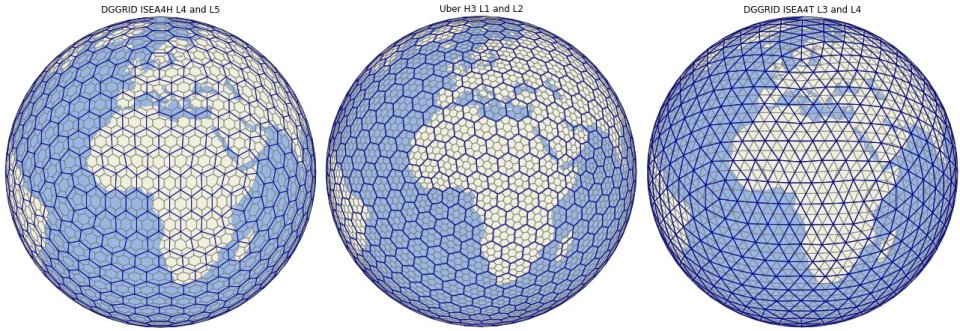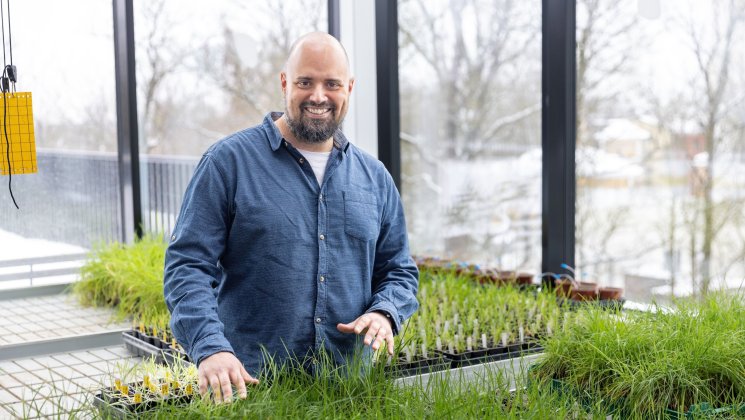-
Faculty of Arts and HumanitiesDean's Office, Faculty of Arts and HumanitiesJakobi 2, r 116-121 51005 Tartu linn, Tartu linn, Tartumaa EST0Institute of History and ArchaeologyJakobi 2 51005 Tartu linn, Tartu linn, Tartumaa EST0Institute of Estonian and General LinguisticsJakobi 2, IV korrus 51005 Tartu linn, Tartu linn, Tartumaa EST0Institute of Philosophy and SemioticsJakobi 2, III korrus, ruumid 302-337 51005 Tartu linn, Tartu linn, Tartumaa EST0Institute of Cultural ResearchÜlikooli 16 51003 Tartu linn, Tartu linn, Tartumaa EST0Institute of Foreign Languages and CulturesLossi 3 51003 Tartu linn, Tartu linn, Tartumaa EST0School of Theology and Religious StudiesÜlikooli 18 50090 Tartu linn, Tartu linn, Tartumaa EST0Viljandi Culture AcademyPosti 1 71004 Viljandi linn, Viljandimaa EST0Professors emeriti, Faculty of Arts and Humanities0Associate Professors emeriti, Faculty of Arts and Humanities0Faculty of Social SciencesDean's Office, Faculty of Social SciencesLossi 36 51003 Tartu linn, Tartu linn, Tartumaa EST0Institute of EducationJakobi 5 51005 Tartu linn, Tartu linn, Tartumaa EST0Johan Skytte Institute of Political StudiesLossi 36, ruum 301 51003 Tartu linn, Tartu linn, Tartumaa EST0School of Economics and Business AdministrationNarva mnt 18 51009 Tartu linn, Tartu linn, Tartumaa EST0Institute of PsychologyNäituse 2 50409 Tartu linn, Tartu linn, Tartumaa EST0School of LawNäituse 20 - 324 50409 Tartu linn, Tartu linn, Tartumaa EST0Institute of Social StudiesLossi 36 51003 Tartu linn, Tartu linn, Tartumaa EST0Narva CollegeRaekoja plats 2 20307 Narva linn, Ida-Virumaa EST0Pärnu CollegeRingi 35 80012 Pärnu linn, Pärnu linn, Pärnumaa EST0Professors emeriti, Faculty of Social Sciences0Associate Professors emeriti, Faculty of Social Sciences0Faculty of MedicineDean's Office, Faculty of MedicineRavila 19 50411 Tartu linn, Tartu linn, Tartumaa ESTInstitute of Biomedicine and Translational MedicineBiomeedikum, Ravila 19 50411 Tartu linn, Tartu linn, Tartumaa ESTInstitute of PharmacyNooruse 1 50411 Tartu linn, Tartu linn, Tartumaa ESTInstitute of DentistryL. Puusepa 1a 50406 Tartu linn, Tartu linn, Tartumaa ESTInstitute of Clinical MedicineL. Puusepa 8 50406 Tartu linn, Tartu linn, Tartumaa ESTInstitute of Family Medicine and Public HealthRavila 19 50411 Tartu linn, Tartu linn, Tartumaa ESTInstitute of Sport Sciences and PhysiotherapyUjula 4 51008 Tartu linn, Tartu linn, Tartumaa ESTProfessors emeriti, Faculty of Medicine0Associate Professors emeriti, Faculty of Medicine0Faculty of Science and TechnologyDean's Office, Faculty of Science and TechnologyVanemuise 46 - 208 51003 Tartu linn, Tartu linn, Tartumaa ESTInstitute of Computer ScienceNarva mnt 18 51009 Tartu linn, Tartu linn, Tartumaa ESTInstitute of GenomicsRiia 23b/2 51010 Tartu linn, Tartu linn, Tartumaa ESTEstonian Marine Institute0Institute of PhysicsInstitute of ChemistryRavila 14a 50411 Tartu linn, Tartu linn, Tartumaa EST0Institute of Mathematics and StatisticsNarva mnt 18 51009 Tartu linn, Tartu linn, Tartumaa EST0Institute of Molecular and Cell BiologyRiia 23, 23b - 134 51010 Tartu linn, Tartu linn, Tartumaa ESTTartu ObservatoryObservatooriumi 1 61602 Tõravere alevik, Nõo vald, Tartumaa EST0Institute of TechnologyNooruse 1 50411 Tartu linn, Tartu linn, Tartumaa ESTInstitute of Ecology and Earth SciencesJ. Liivi tn 2 50409 Tartu linn, Tartu linn, Tartumaa ESTProfessors emeriti, Faculty of Science and Technology0Associate Professors emeriti, Faculty of Science and Technology0Institute of BioengineeringArea of Academic SecretaryHuman Resources OfficeUppsala 6, Lossi 36 51003 Tartu linn, Tartu linn, Tartumaa EST0Area of Head of FinanceFinance Office0Area of Director of AdministrationInformation Technology Office0Administrative OfficeÜlikooli 17 (III korrus) 51005 Tartu linn, Tartu linn, Tartumaa EST0Estates Office0Marketing and Communication OfficeÜlikooli 18, ruumid 102, 104, 209, 210 50090 Tartu linn, Tartu linn, Tartumaa EST0Area of Vice Rector for DevelopmentCentre for Entrepreneurship and InnovationNarva mnt 18 51009 Tartu linn, Tartu linn, Tartumaa EST0University of Tartu Natural History Museum and Botanical GardenVanemuise 46 51003 Tartu linn, Tartu linn, Tartumaa EST0International Cooperation and Protocol Office0University of Tartu MuseumLossi 25 51003 Tartu linn, Tartu linn, Tartumaa EST0Area of RectorRector's Strategy OfficeInternal Audit OfficeArea of Vice Rector for Academic AffairsOffice of Academic AffairsUniversity of Tartu Youth AcademyUppsala 10 51003 Tartu linn, Tartu linn, Tartumaa EST0Student Union OfficeÜlikooli 18b 51005 Tartu linn, Tartu linn, Tartumaa EST0Centre for Learning and TeachingArea of Vice Rector for ResearchUniversity of Tartu LibraryW. Struve 1 50091 Tartu linn, Tartu linn, Tartumaa EST0Grant Office
ERC grant helps to apply geoinformatics to mitigate the environmental impact of intensive agriculture

The European Research Council (ERC) has awarded Evelyn Uuemaa, Professor of Geoinformatics at the University of Tartu, the Consolidator Grant to develop models based on remote sensing data and machine learning that will enable both farmers and policymakers to plan nature-based solutions in the landscape to mitigate the negative environmental impact of intensive agriculture.
The rapid growth of the world's population has increased the demand for intensive agriculture. Unfortunately, this often comes with negative environmental impacts. This is why more and more people are looking for new ways of sustainable agriculture, where the environmental impact is reduced as yields increase. Nature-based solutions, such as wetlands and riparian buffer strips along watercourses, can effectively reduce nutrient (nitrogen and phosphorus) runoff from agricultural catchments. However, it is neither economically viable nor, in most cases, naturally feasible to establish them throughout the landscape. It is therefore important to identify priority areas in the landscape when planning nature-based solutions, making smart use of spatial data.
The team of Evelyn Uuemaa, Professor of Geoinformatics at the University of Tartu, uses geoinformatics methods to test existing spatial data processing solutions and create new ones. According to Uuemaa, the amount of spatial data from satellites has exploded in the last 10–15 years. "Yet this is largely an untapped resource, as the spatial data processing capabilities and the machine learning skills that can be applied to them have not caught up with the large volumes of data. So, this data has largely remained unused in decision-making processes," explained Uuemaa.
The amount of spatial data from satellites has exploded in the last 10–15 years. Yet this is largely an untapped resource, as the spatial data processing capabilities and the machine learning skills that can be applied to them have not caught up with the large volumes of data. So, this data has largely remained unused in decision-making processes.
In the upcoming project, Uuemaa's team plans to use spatial data (including remote sensing) to identify critical nutrient runoff hotspots on the one hand, and the most suitable sites for establishing and restoring wetlands and riparian buffer strips on the other.
Using spatial data from different sources creates the need to bring them into the same coordinate system and reach the same spatial resolution. This becomes particularly important when using machine learning. "The complexity of the task stems from the fact that the Earth is spherical, but our data models are mostly planar. This automatically means distortions in the initial information," said Uuemaa. To avoid distortions, the development of new unique coordinate systems has started to cover the entire globe with a uniform discrete global grid (see figure). This is a hierarchical grid, in which each cell is individually identifiable.

Uuemaa's research team has been working for several years on indexing and connecting such a grid more efficiently. "In the upcoming research project, we can develop the best solution for linking environmental data to a data cube based on the discrete global grid, which allows data to be analysed from the global to the local level without changing the coordinate system," she explained. It is also very well suited for machine learning applications. The team will use machine learning in modelling to identify hotspots of agricultural diffuse pollution. "The European Space Agency and the European statistical offices are also interested in such a data cube solution, as it allows very large spatial data to be taken to a unified format and used more efficiently," said Uuemaa.
The project will result in global map layers that will allow the identification of critical nutrient runoff sites and carry out the related planning. All the analysis will take place on a global scale, and the results will be tested on pilot sites in Europe and beyond. The project will be based on open-source software, so that the resulting data cube solution and machine learning models will be accessible and available for further development by all.
The ERC grant amounts to nearly €2 million and is intended to support the further development of an established researcher. The research project will run for five years, and its implementation will involve creating two post-doctoral fellowships, three doctoral student places and one position of a scientific programmer.
Read more similar news





